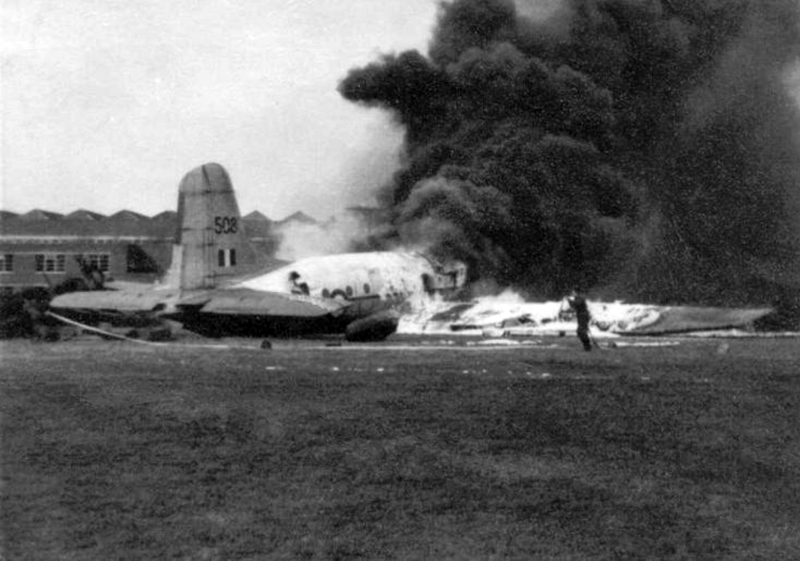Country
code
West Sussex
Crash of a Beechcraft E90 King Air in Goodwood
Date & Time:
Apr 22, 1985 at 1053 LT
Registration:
G-BHUL
Survivors:
Yes
Schedule:
Elstree - Goodwood
MSN:
LW-83
YOM:
1974
Crew on board:
2
Crew fatalities:
Pax on board:
0
Pax fatalities:
Other fatalities:
Total fatalities:
0
Captain / Total hours on type:
1036.00
Circumstances:
The aircraft took off on the grass runway 06 with the P U/S in the left seat as handling pilot. The visibility was good, with high cloud cover, and wind recorded as from 060° to 080° at 20 to 30 knots, gusting to 35 knots. During the initial climb, PI simulated an engine failure, and after the touch drills and climb out were established, restored power to the 'failed' engine. The climb was continued to 2,500 feet and an engine failure was again simulated before an NDB approach was made to runway 33. P U/S then executed a single engined missed approach on completion of the let down, and entered the runway 06 circuit pattern. When at the downwind position he called 'downwind full stop'. The aircraft continued to the final approach with the simulated failed engine at a zero thrust setting of 120 feet lb torque and 1800 rpm. The P U/S stated that he had some difficulty in stabilising the approach and controlling the airspeed in the gusty conditions. At approximately 300 feet agl he was not satisfied with the approach and initiated a single engined go-around, raising gear and flaps. At some later stage PI took control and pushed the two throttle and rpm levers fully forward. P U/S remembers the aircraft entering a spiral descent to the left, and both pilots remember their evacuation of the aircraft. However, they have to recollection of airspeed, height, which engine was 'failed' on either occasion, or indeed the event which prompted PI to take control. The aircraft was seen to overfly the airfield in a north easterly direction with gear and flaps raised, and at a height variously estimated as between 100 and 300 feet agl. Just outside the airfield boundary the aircraft was seen to roll to the right then roll, or yaw and roll to the left and enter a spiral descent into an open field. The left wing tip struck the ground at an angle of 30° to the surface of the field, the aircraft then yawed left through 90° and slid and rolled a further 45 yards. It came to rest almost inverted and on its right side, with the detached left wing lying alongside the stub of the right wing. Both pilots were seriously injured.
Probable cause:
The wreckage of the aircraft was removed to the AIB facility at Farnborough for further examination which included an inspection of controls and control runs, and stripping the engines and propellers. No significant fault or failure was found. The airspeed indicators were also calibrated and found to be accurate.
Final Report:
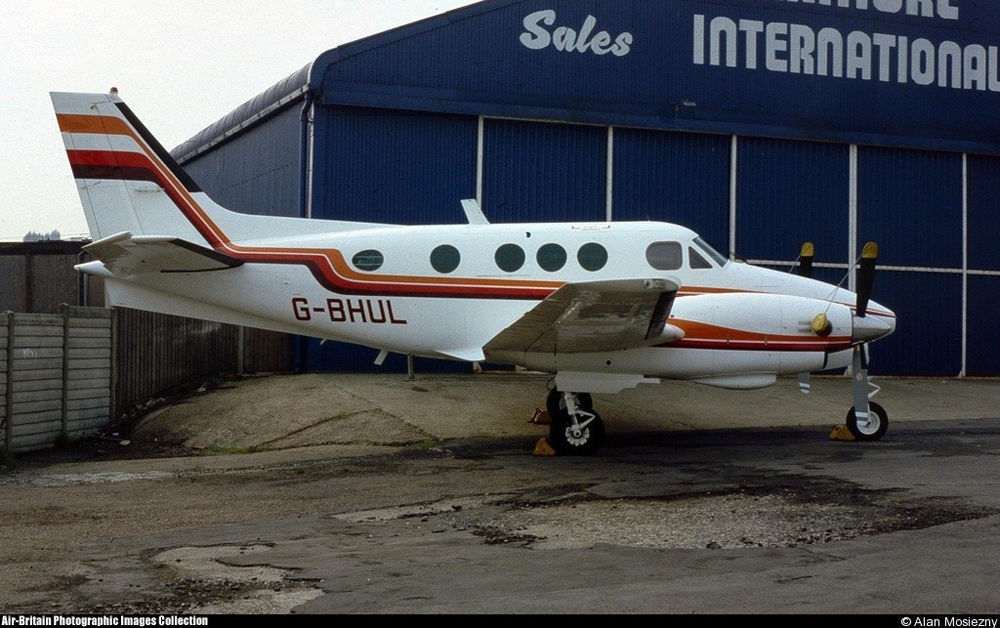
Crash of a De Havilland DH.104 Dove 2A in Shoreham-by-Sea: 1 killed
Date & Time:
Jul 9, 1983 at 1005 LT
Registration:
G-AMYP
Survivors:
No
Schedule:
Shoreham-by-Sea - Shoreham-by-Sea
MSN:
04421
YOM:
1953
Crew on board:
1
Crew fatalities:
Pax on board:
0
Pax fatalities:
Other fatalities:
Total fatalities:
1
Captain / Total hours on type:
13.00
Circumstances:
The pilot, also owner of the aircraft, elected to make a post-engine change test flight himself. After takeoff from Shoreham-by-Sea Airport runway 07 in good weather, eye-witnesses considered that the take-off and initial climb were normal except that intermittent puffs of dark smoke were seen coming from the right engine. At about 600 feet above ground level the aircraft was seen to roll to the right then turn on to its back and spin to the ground. After a short pause the aircraft burst into flames and was largely consumed by an intense fire. The pilot, sole on board, was killed.
Probable cause:
Examination of the wreckage revealed that the aircraft impacted with the sloping side of the west flood bank of the River Adur. At impact the aircraft was 60° nose down, rolled to the right, and was yawing to the right. Both engines were rotating, with the left engine developing more power than the right. Detailed wreckage examination at the AIB engineering facility at Farnborough showed that the rudder was approximately fully left and the elevator fully up. Engine strip examination yielded no evidence of any pre-crash defect in the left engine, but severe corrosion was found in the fuel control boost capsule (Part n° CH 90274) of the right engine. Tests were carried out on an engine test bed to examine the effects of boost capsule perforation. It was found that such a fault would induce power fluctuations, and that the engine could experience a rich cut when the throttle was retarded. Research into previous incidents on the same type of aircraft revealed two occasions during which fluctuating boost and rpm had been experienced after take-off and later attributed to boost capsule perforation.
Final Report:
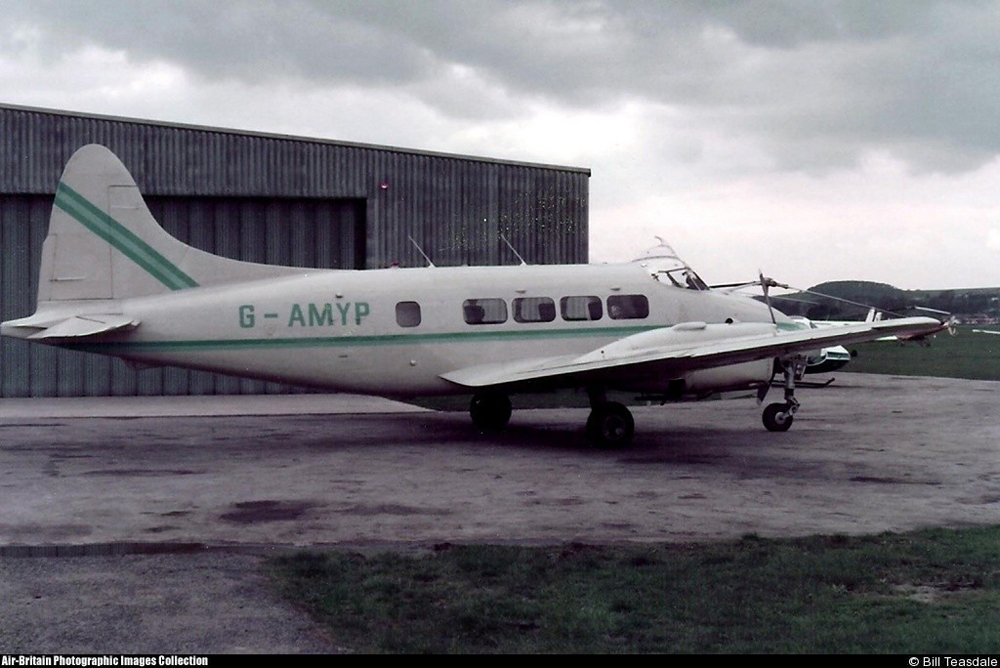
Crash of a Vickers VC-10-1109 at London-Gatwick
Date & Time:
Jan 28, 1972
Registration:
G-ARTA
Survivors:
Yes
Schedule:
London-Heathrow - London-Gatwick
MSN:
803
YOM:
1962
Crew on board:
4
Crew fatalities:
Pax on board:
0
Pax fatalities:
Other fatalities:
Total fatalities:
0
Circumstances:
The crew was completing a positioning flight from Heathrow to Gatwick. After touchdown on runway 08, the pilot selected spoilers and reverse thrust when the airplane became airborne again then landed back heavily and bounced twice. The fuselage was bent just prior to the wings, a tyre on the nose wheel burst and a wheel separated. The aircraft rolled for several hundred meters before coming to rest. All four crew members escaped uninjured while the aircraft was damaged beyond repair.

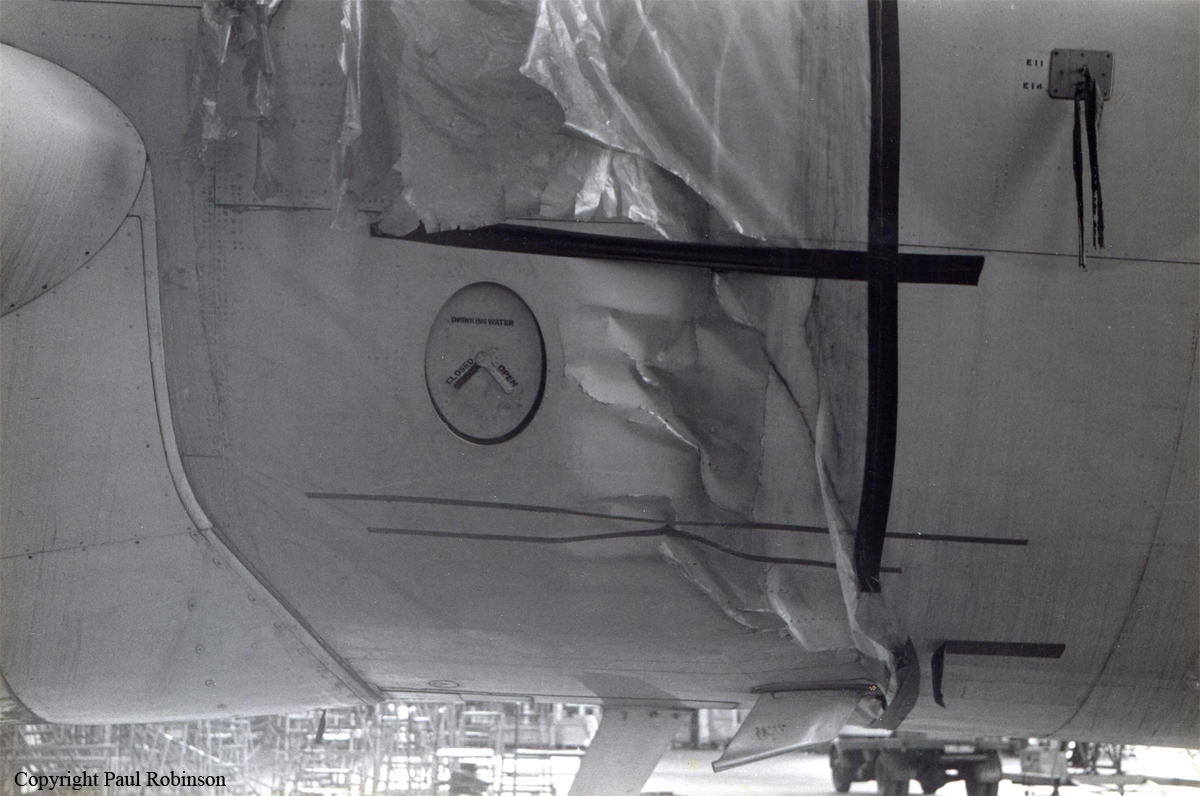
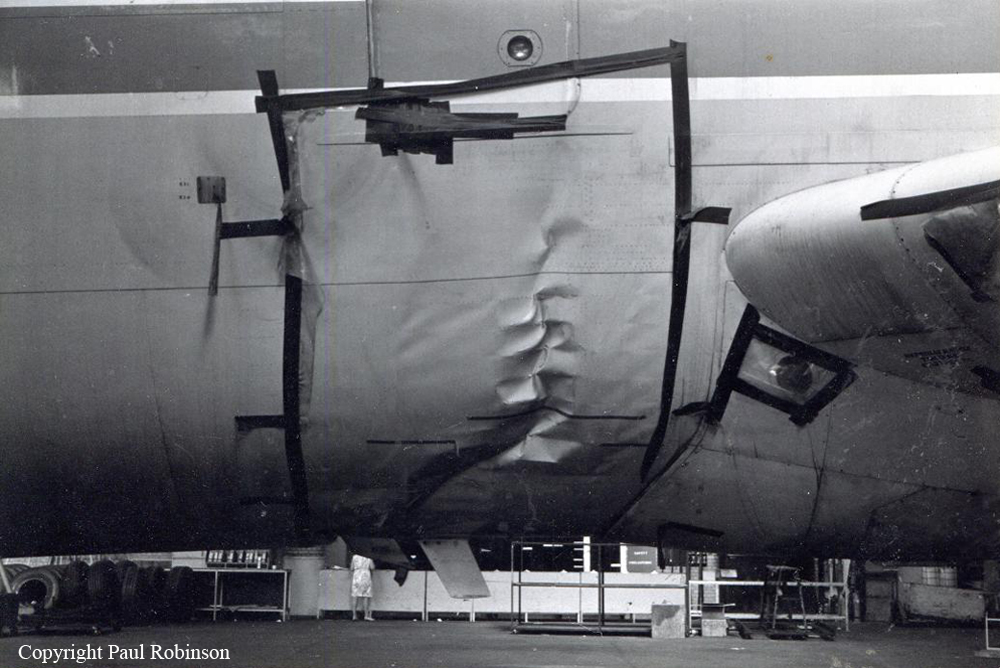
Crash of an Airspeed AS.57 Ambassador 2 in London-Gatwick
Date & Time:
Jul 26, 1969
Registration:
G-ALZR
Survivors:
Yes
Schedule:
Paris - London
MSN:
5214
YOM:
1952
Crew on board:
3
Crew fatalities:
Pax on board:
5
Pax fatalities:
Other fatalities:
Total fatalities:
0
Circumstances:
On touchdown at Gatwick Airport, the nose gear collapsed. The airplane slid for dozen yards before coming to rest. All eight occupants were evacuated safely while the aircraft was damaged beyond repair.
Probable cause:
Nose gear collapsed on landing.
Crash of a Boeing 727-113C in London: 50 killed
Date & Time:
Jan 5, 1969 at 0134 LT
Registration:
YA-FAR
Survivors:
No
Schedule:
Kabul - Kandahar - Beirut - Istanbul - Frankfurt - London
MSN:
19690/540
YOM:
1968
Flight number:
FG701
Crew on board:
8
Crew fatalities:
Pax on board:
54
Pax fatalities:
Other fatalities:
Total fatalities:
50
Captain / Total hours on type:
512.00
Copilot / Total hours on type:
210
Aircraft flight hours:
1715
Circumstances:
The accident occurred on a scheduled passenger flight from Frankfurt when the aircraft was making an ILS approach for a night landing on Runway 27 at Gatwick Airport. The weather was clear except that freezing fog persisted in places including the Gatwick area. The runway visual range (RVR) at Gatwick was 100 metres. The approach was commenced with the autopilot coupled to the instrument landing system (ILS) but after the glide-slope had been captured the commander who was at the controls, disconnected the autopilot because the "stabiliser out of trim" warning light illuminated. At the outer marker the flap setting was changed from 1° to 30° and shortly afterwards the rate of descent increased and the aircraft descended below the glide-slope. Some 200 feet from the ground the pilot realised that the aircraft was too low and initiated a missed approach procedure. The aircraft began to respond but the descent was not arrested in time to avoid a collision with trees and a house that destroyed both the aircraft and the house and set the wreckage on fire. 48 occupants as well as two people in the house were killed. 14 others were injured. The aircraft was totally destroyed by impact forces and a post crash fire.
Probable cause:
The accident was the result of the commander inadvertently allowing the aircraft to descend below the glide slope during the final stage of an approach to land until it was too low for recovery to be effected. The following findings were reported:
- The deceptive nature of the weather conditions led the commander to an error of judgment in deciding to make an approach to Gatwick,
- The commander's decision to conduct an approach was not in itself a cause of the accident,
- Incorrect flap configuration at glide-slope interception led to a temporary out-of-trim condition during the automatic approach and the illumination of the stabilizer "out-of-trim" warning light,
- The commander interpreted the "out-of-trim" warning light as indicating a possible malfunction and disconnected the auto-pilot,
- Out-of-sequence and late selection of 30° flaps from 15° while the-aircraft was being flown manually resulted in an increase in the rate of descent, causing the aircraft to go rapidly below the glide-slope,
- The commander did not become aware of the deviation from the glide-slope until it was too late to effect a full recovery,
- The pilot's attention was probably directed outside the aircraft at the critical time in an attempt to discover sufficient visual reference to continue the approach rather than to the flight instruments,
- Monitoring by precision approach radar would have warned the pilots of the deviation in time, if corrective action was taken promptly, to avoid the accident.
- The deceptive nature of the weather conditions led the commander to an error of judgment in deciding to make an approach to Gatwick,
- The commander's decision to conduct an approach was not in itself a cause of the accident,
- Incorrect flap configuration at glide-slope interception led to a temporary out-of-trim condition during the automatic approach and the illumination of the stabilizer "out-of-trim" warning light,
- The commander interpreted the "out-of-trim" warning light as indicating a possible malfunction and disconnected the auto-pilot,
- Out-of-sequence and late selection of 30° flaps from 15° while the-aircraft was being flown manually resulted in an increase in the rate of descent, causing the aircraft to go rapidly below the glide-slope,
- The commander did not become aware of the deviation from the glide-slope until it was too late to effect a full recovery,
- The pilot's attention was probably directed outside the aircraft at the critical time in an attempt to discover sufficient visual reference to continue the approach rather than to the flight instruments,
- Monitoring by precision approach radar would have warned the pilots of the deviation in time, if corrective action was taken promptly, to avoid the accident.

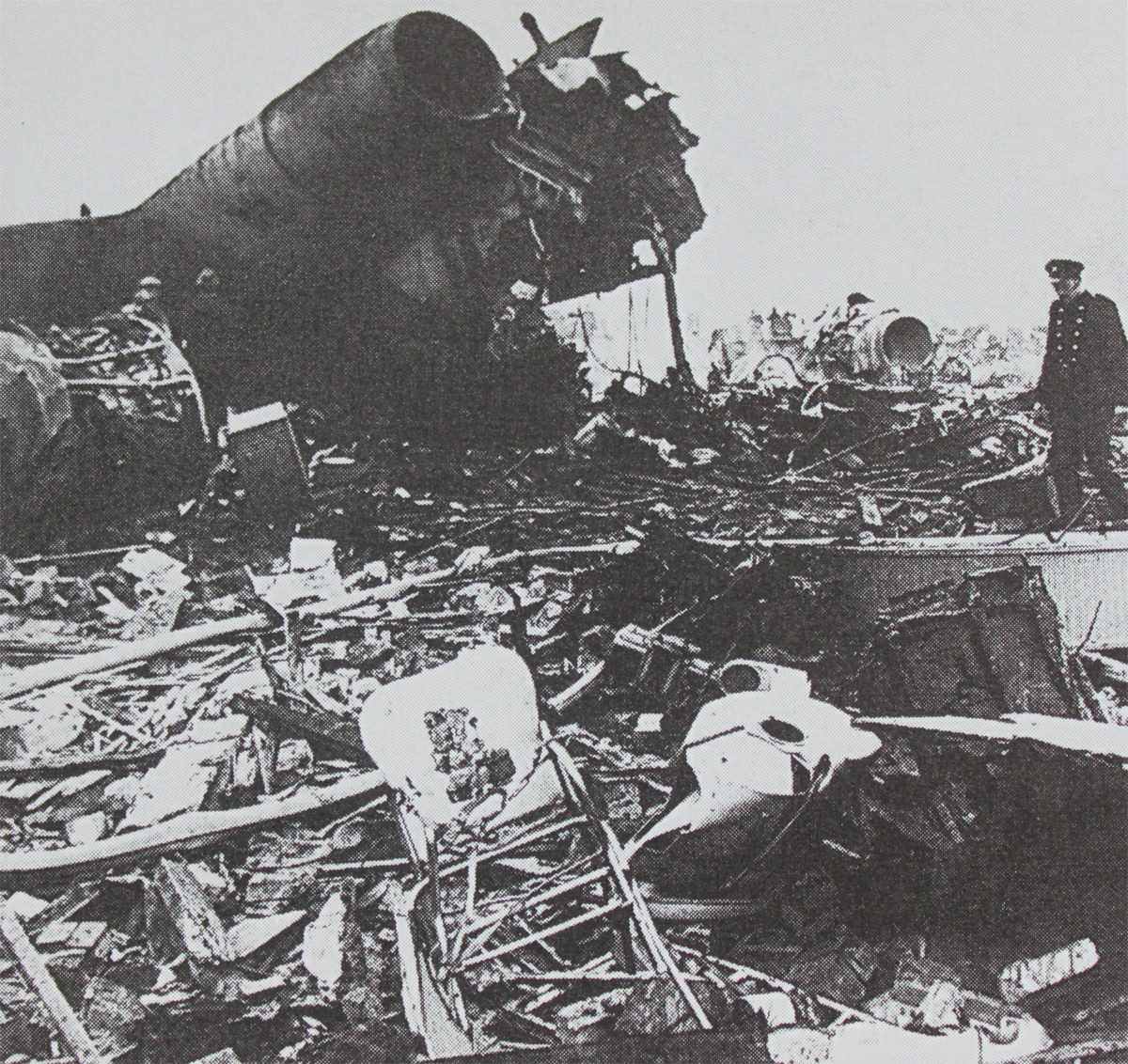
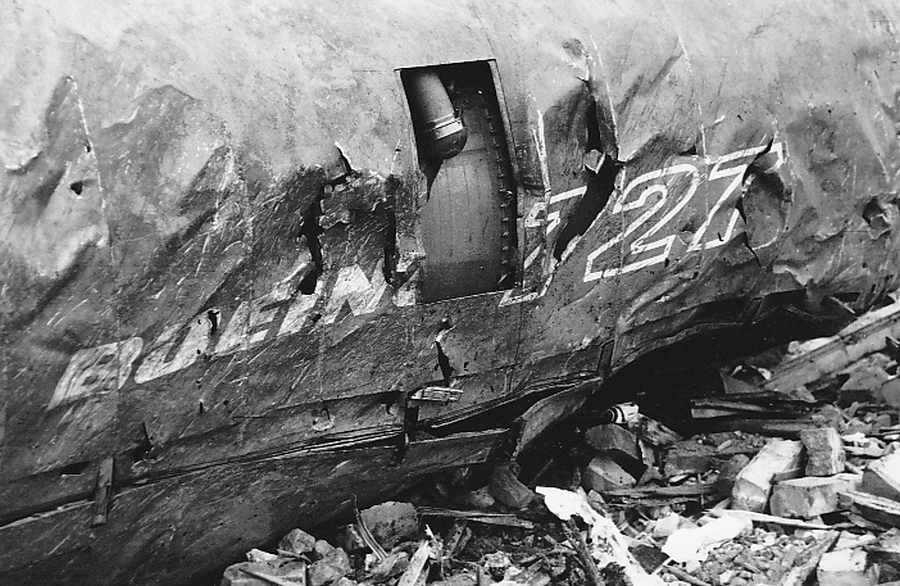

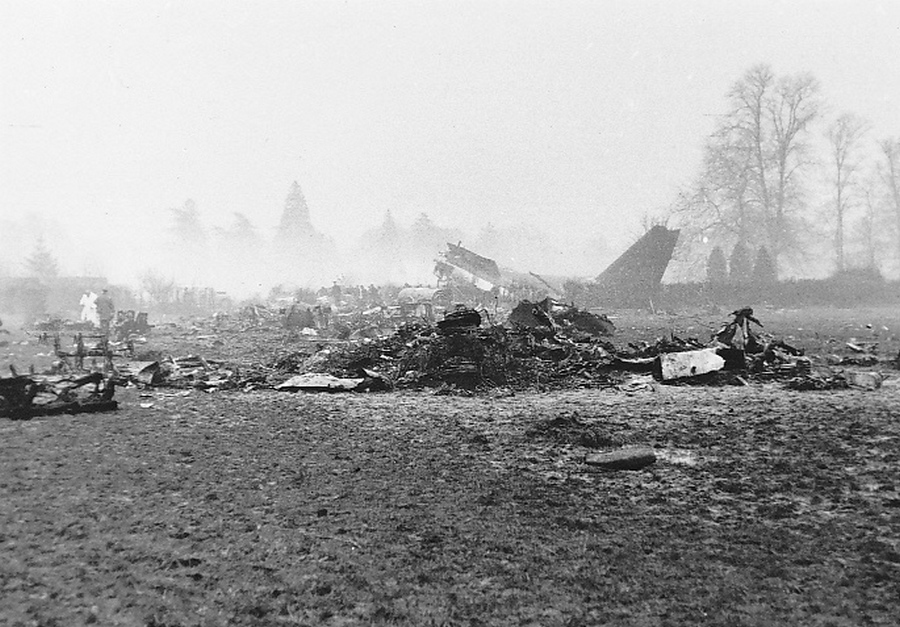
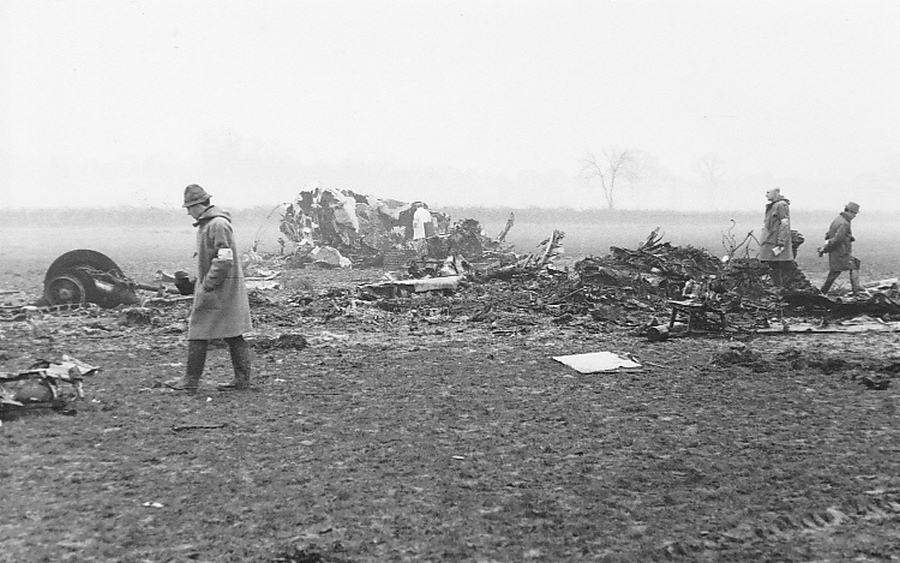

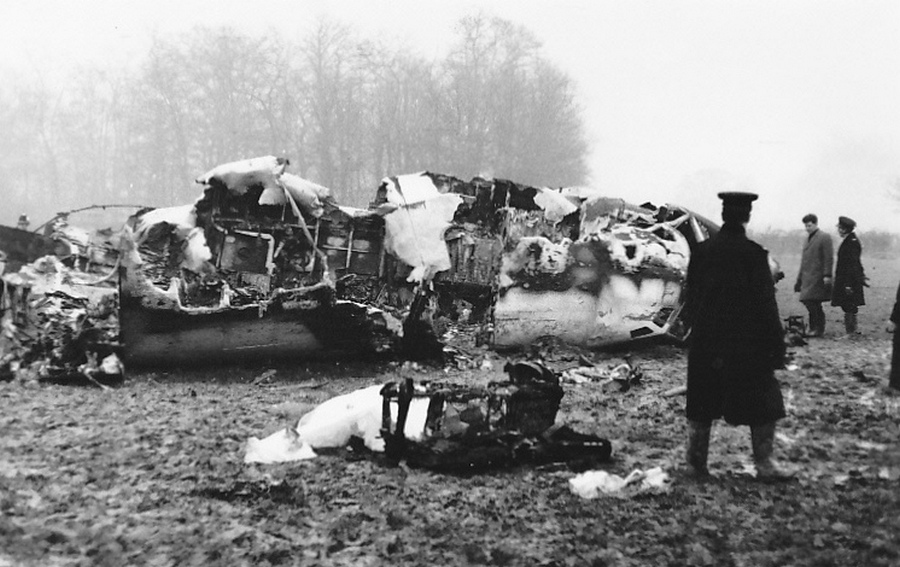
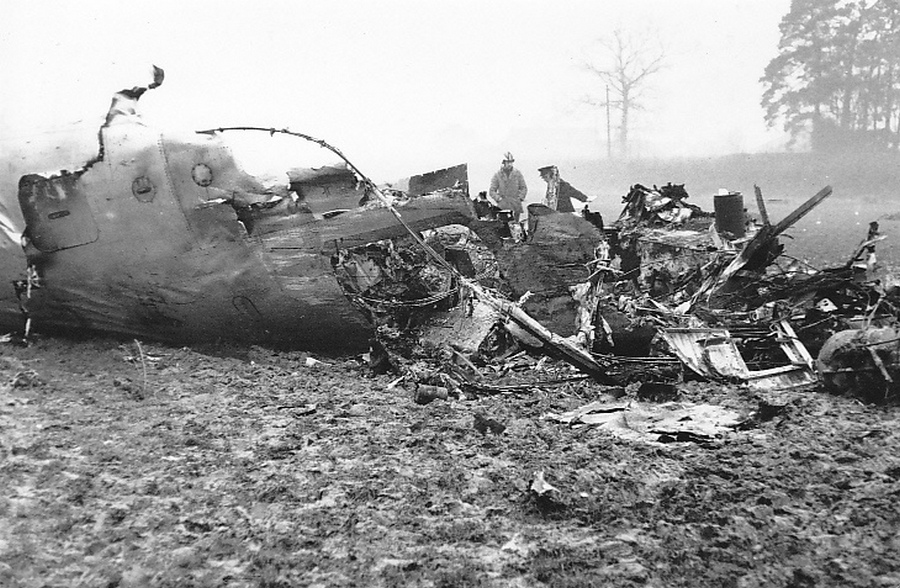
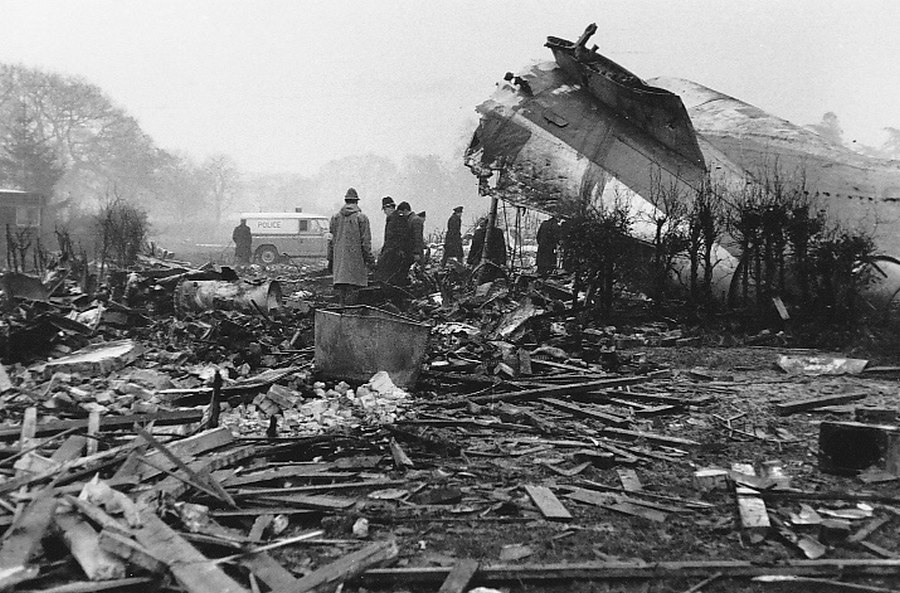

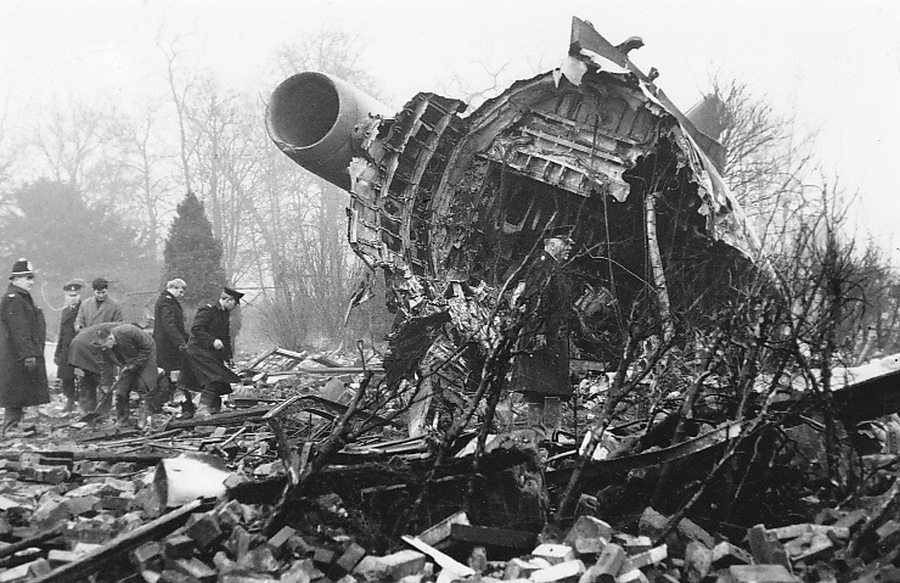
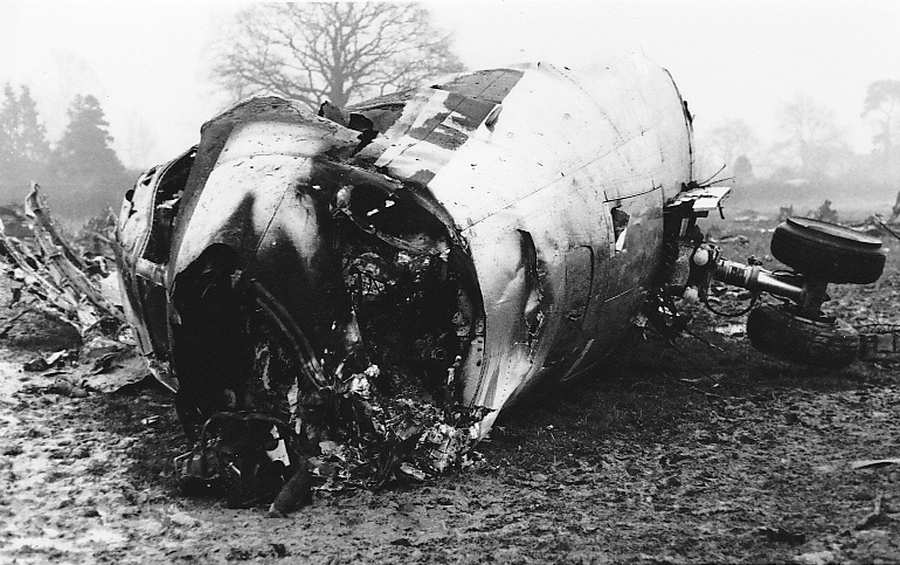
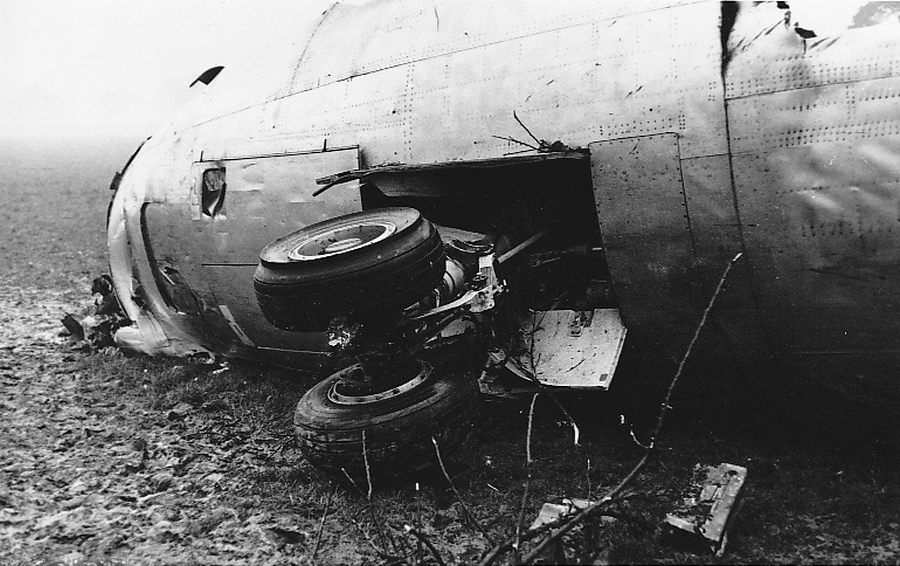
Crash of a Sud-Aviation SE-210 Caravelle 10R in Haslemere: 37 killed
Date & Time:
Nov 4, 1967 at 2202 LT
Registration:
EC-BDD
Survivors:
No
Schedule:
Málaga – London
MSN:
202
YOM:
1966
Flight number:
IB062
Crew on board:
7
Crew fatalities:
Pax on board:
30
Pax fatalities:
Other fatalities:
Total fatalities:
37
Circumstances:
Iberia flight IB062 left Málaga, Spain, at 19:30 UTC on a flight to London-Heathrow Airport, United Kingdom. The weather at the time was slightly misty with intermittent drizzle but there was reasonable visibility. The aircraft was cleared to descend to FL210 after passing latitude 50 °N and was given a routing via Ibsley and Dunsfold. After passing conflicting traffic, the aircraft was recleared to FL110 and directed to turn right on to 060° for Dunsfold. Passing abeam Fawley the aircraft was further cleared to FL60 and, in acknowledging this instruction, the crew reported leaving FL145. Just under 4 minutes later the aircraft was cleared to proceed direct to Epsom on its own navigation. The flight crew acknowledgement this instruction. All the while the aircraft had been in a continuous descent, until it impacted trees on the southern slope of Blackdown Hill, approximately 48 km south-southwest of Heathrow Airport. The aircraft continued for hundreds of yards, passing across a meadow where it killed 65 grazing sheep. It then broke through a large hedge and parts of the aircraft fell off destroying a garage, and damaging parts of the roof of Upper Blackdown House as the aircraft disintegrated. None of the 37 occupants survived the crash.
Probable cause:
Accident investigators failed to find the reason for the continued descent. A possible misreading of the altimeters was examined in detail. The aircraft was fitted with three-pointer altimeters with warnings to indicate when the aircraft was below 10,000ft. The aircraft descended continuously at a steady rate over a period of 13 1/2 minute and the pointers would have been in continuous motion throughout, increasing the likelihood of misreading. The cross hatching in this type of altimeter first appears in a window in the 10,000ft disc at an indicated altitude of 26,666ft and the edge of the cross hatching would have been visible within 2 minutes of the aircraft beginning its descent. At 10,000 feet the cross hatching completely fills the window and it remains filled as long as the aircraft is below 10,000ft. Thus the cross hatching would have been visible to the crew for a period of about 9 1/2 minutes before the aircraft passed through FL60. According to the investigation report, it is not difficult to read an indication of 6,000ft as 16,000ft with this type of altimeter if particular note is not made of the position of the 10,000ft pointer. Evidence against the possibility of a simple misreading of this sort is the message from the aircraft to ATC reporting passing FL145. indicating that at this time the crew knew that they were below 16,000ft. This evidence indicates that down to this level there had been no misreading or misinterpretation but it does not dispose of the possibility that the crew subsequently suffered a mental loss of sequence and transposed themselves in time and space back to some altitude above 16,000ft. This has been known to, happen in the past, the investigators noted. Nevertheless, there is no evidence to show that it happened on this occasion. In conclusion, the accident was due to the aircraft having continued to descend through its assigned flight level down to the ground. No reason could be established for the continued descent.
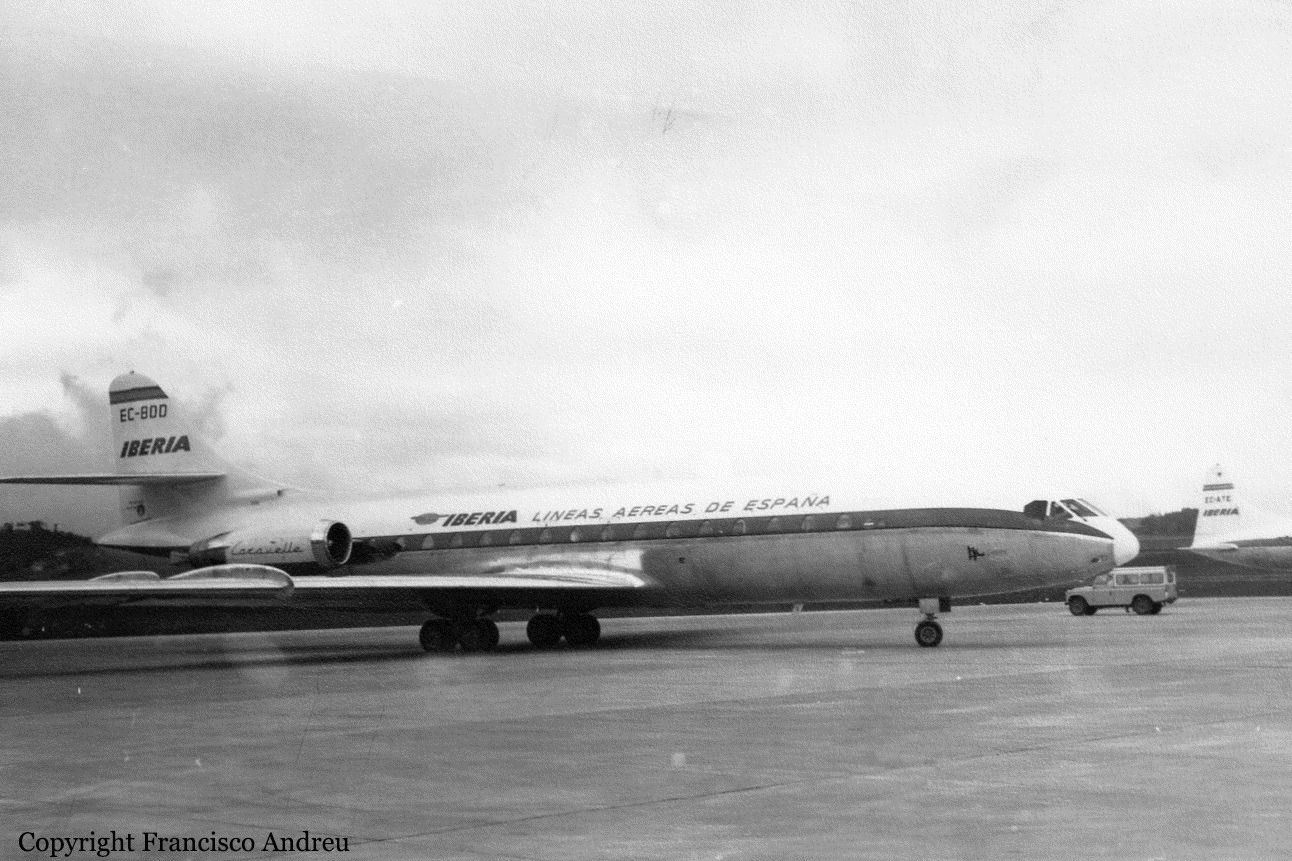
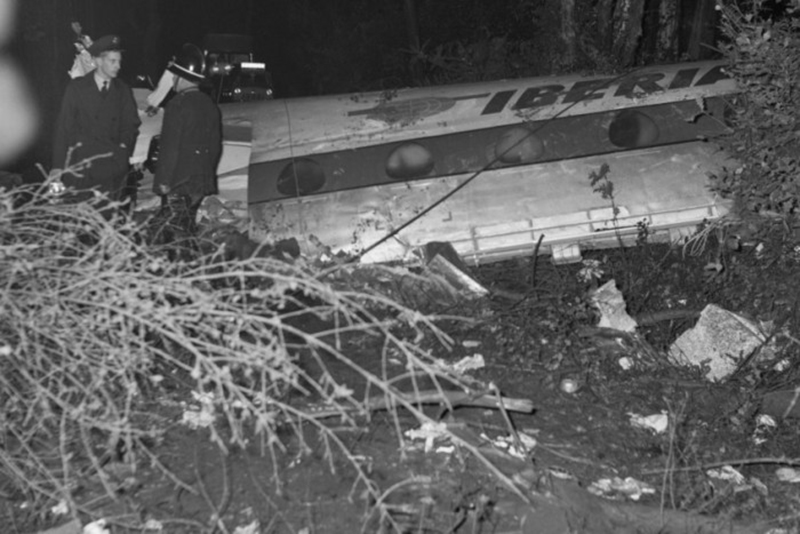
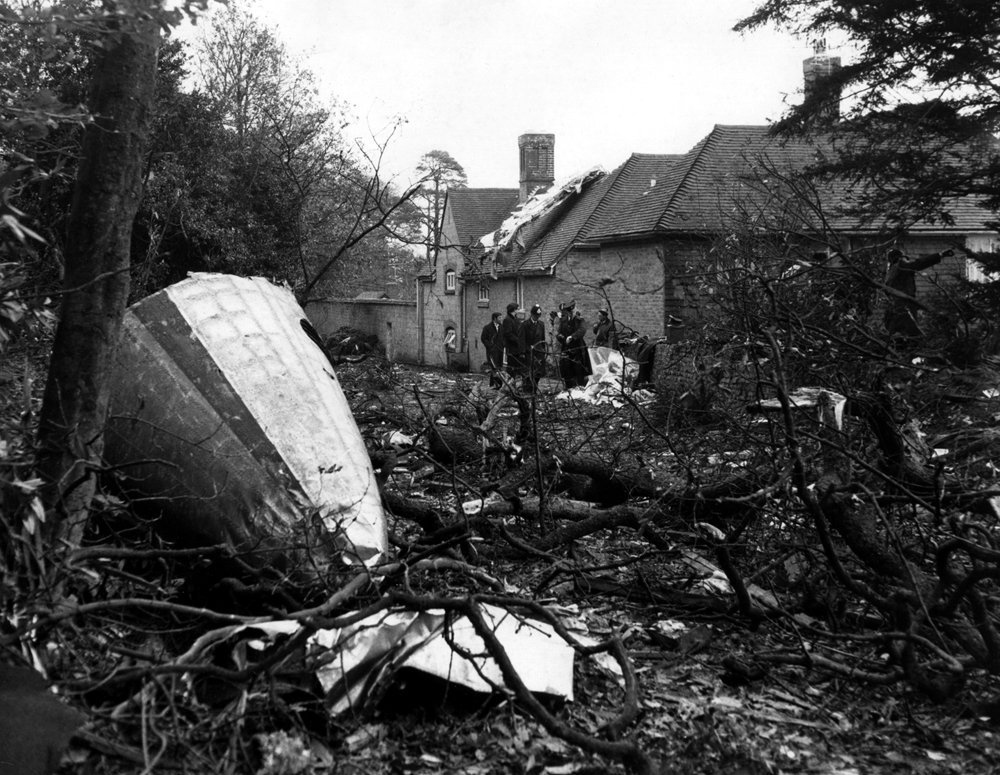
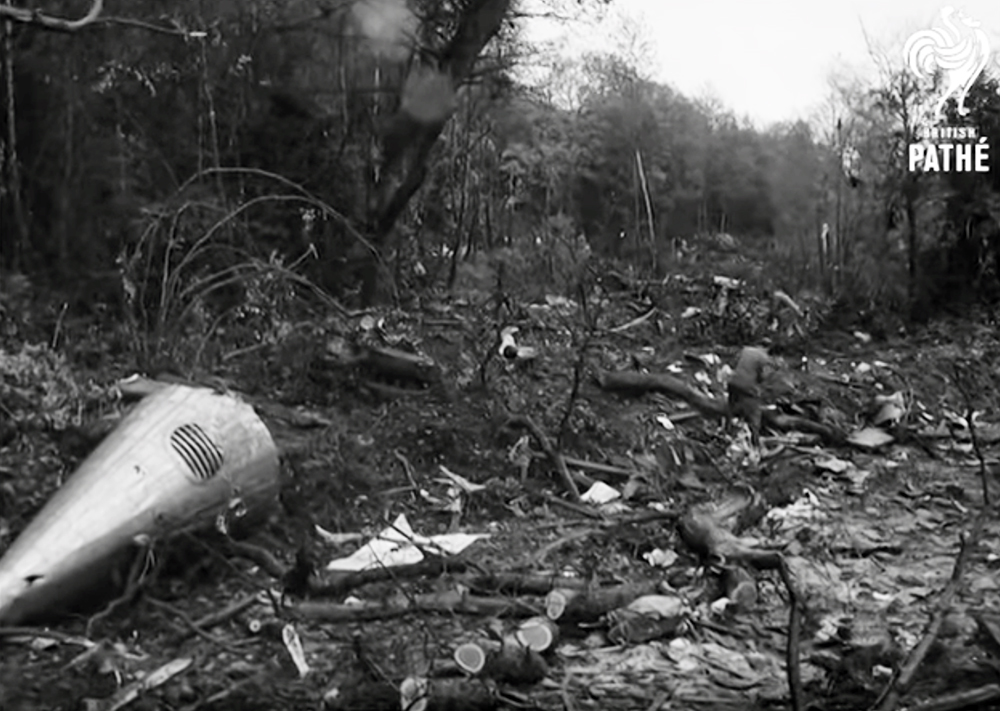
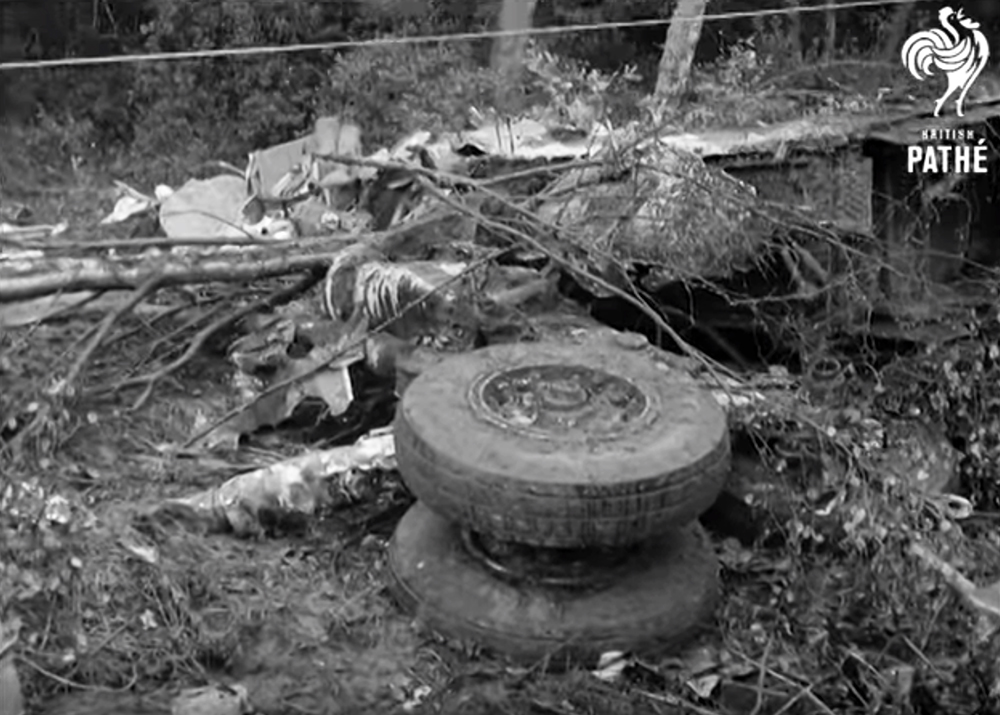
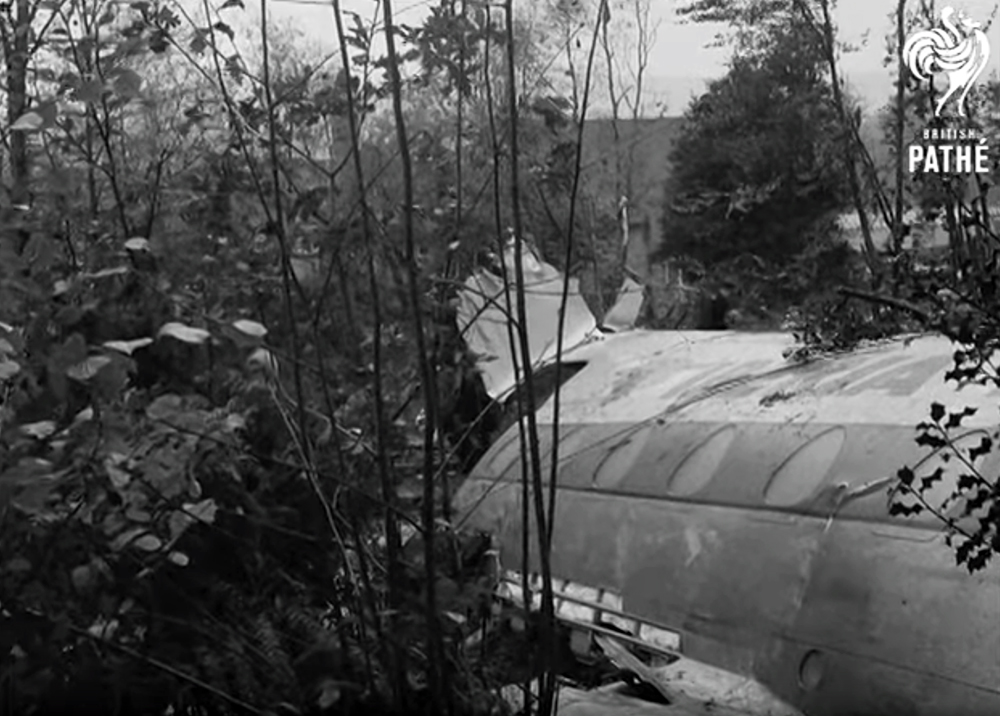
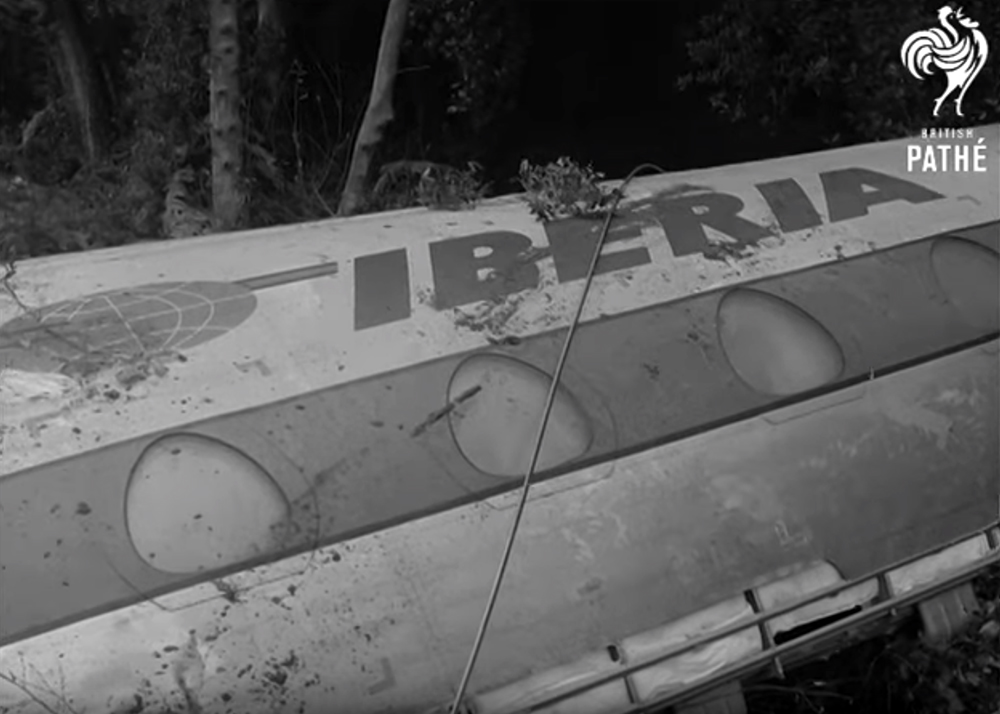
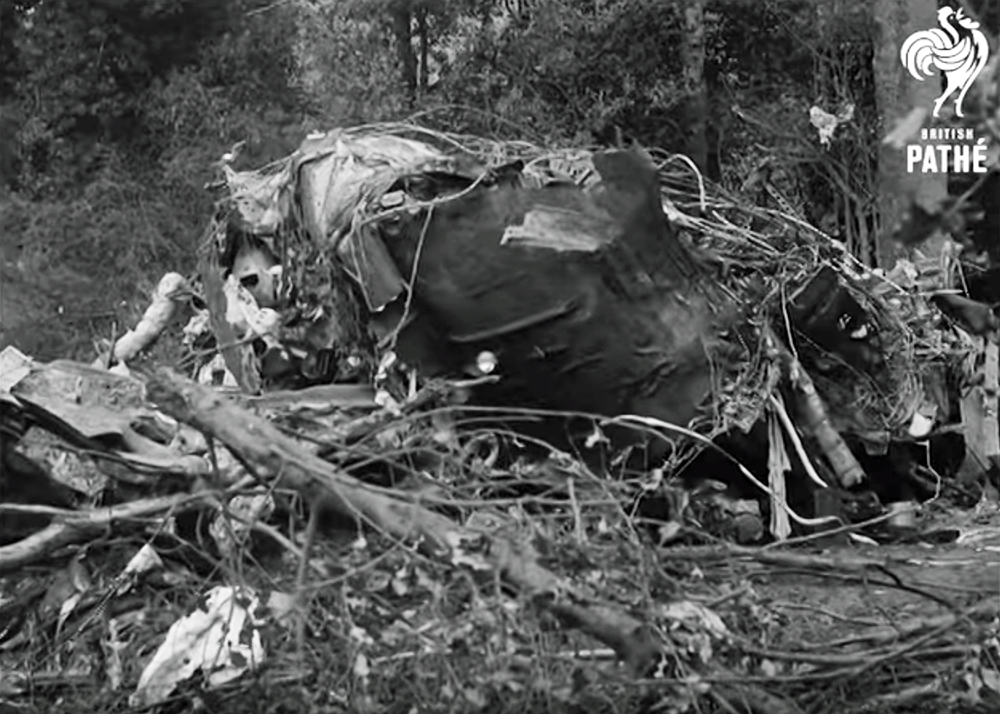
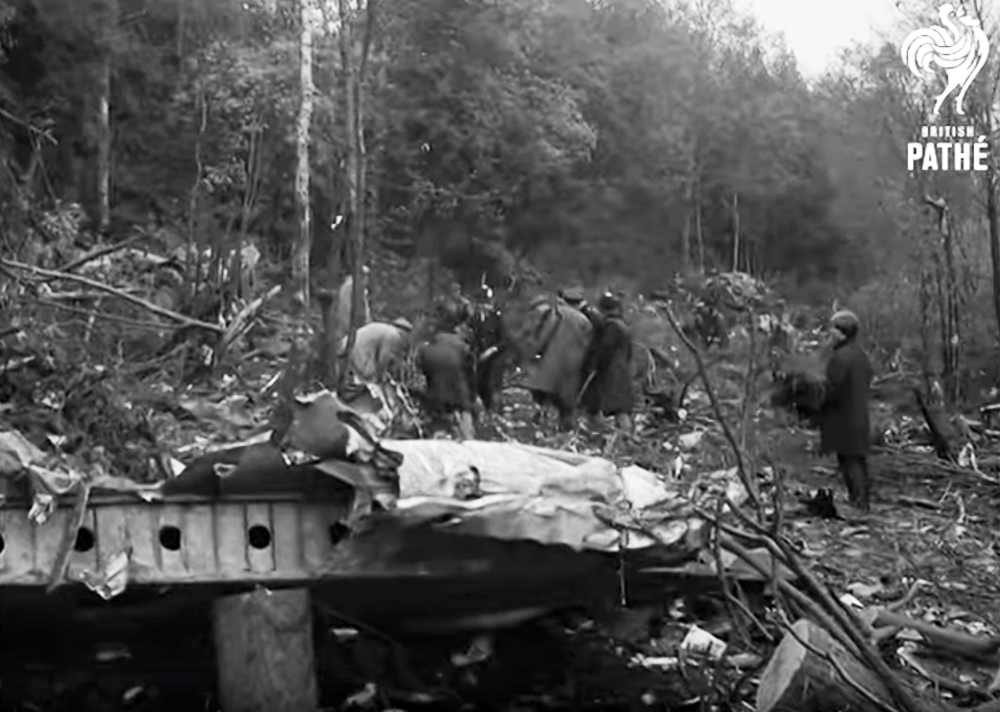
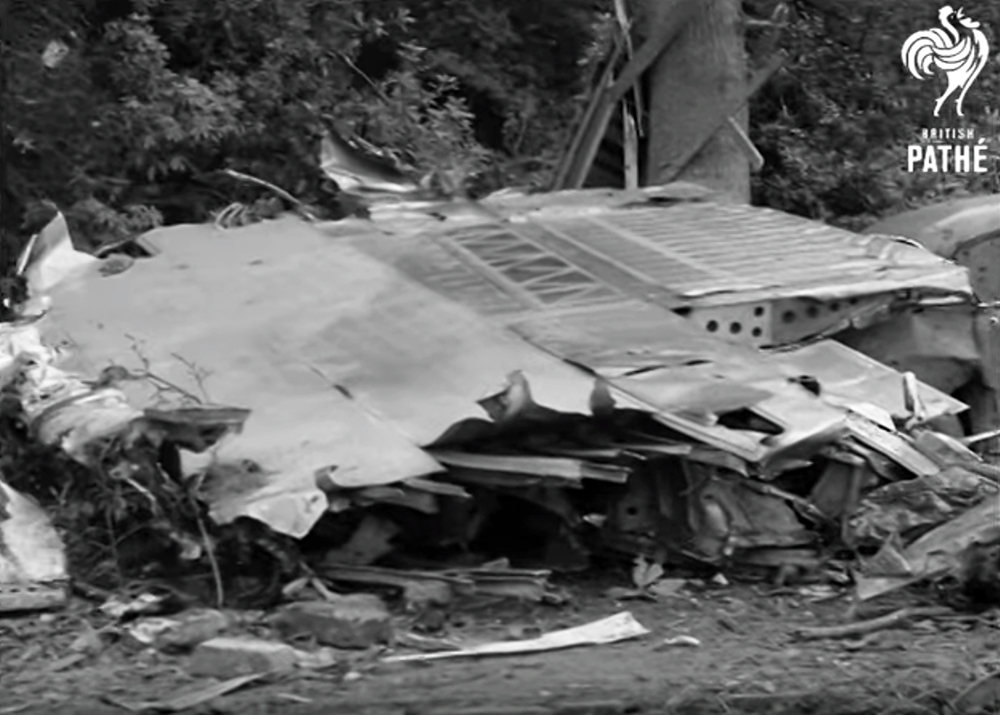
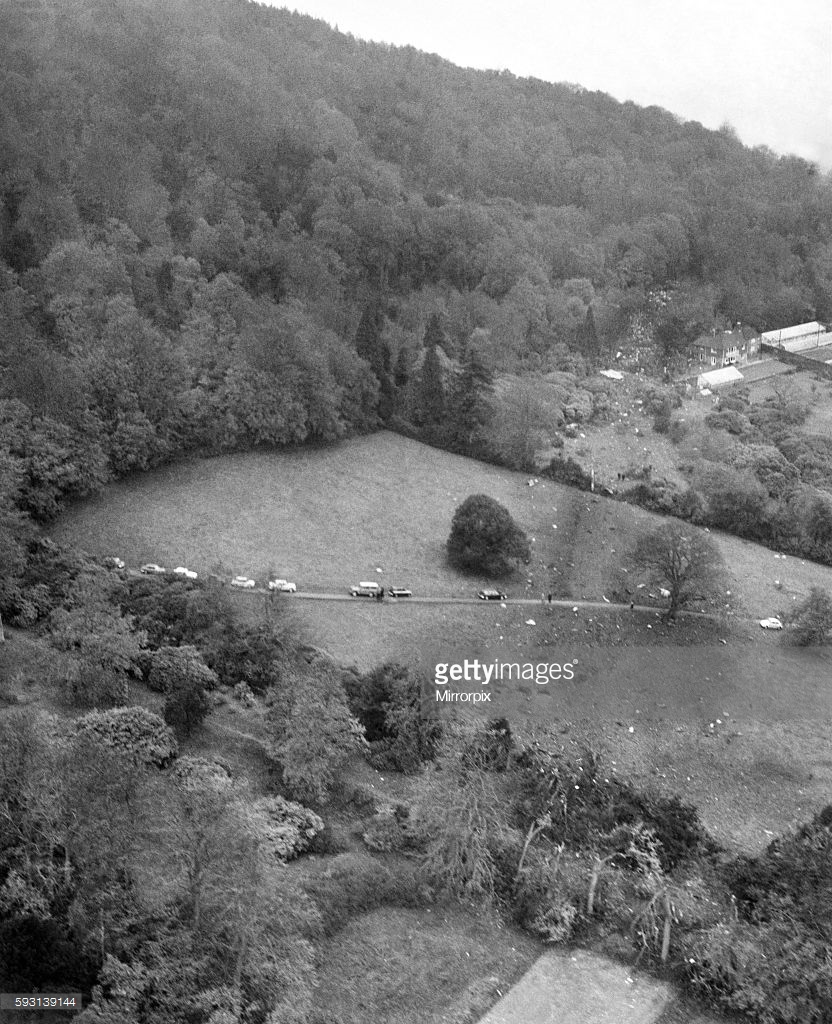
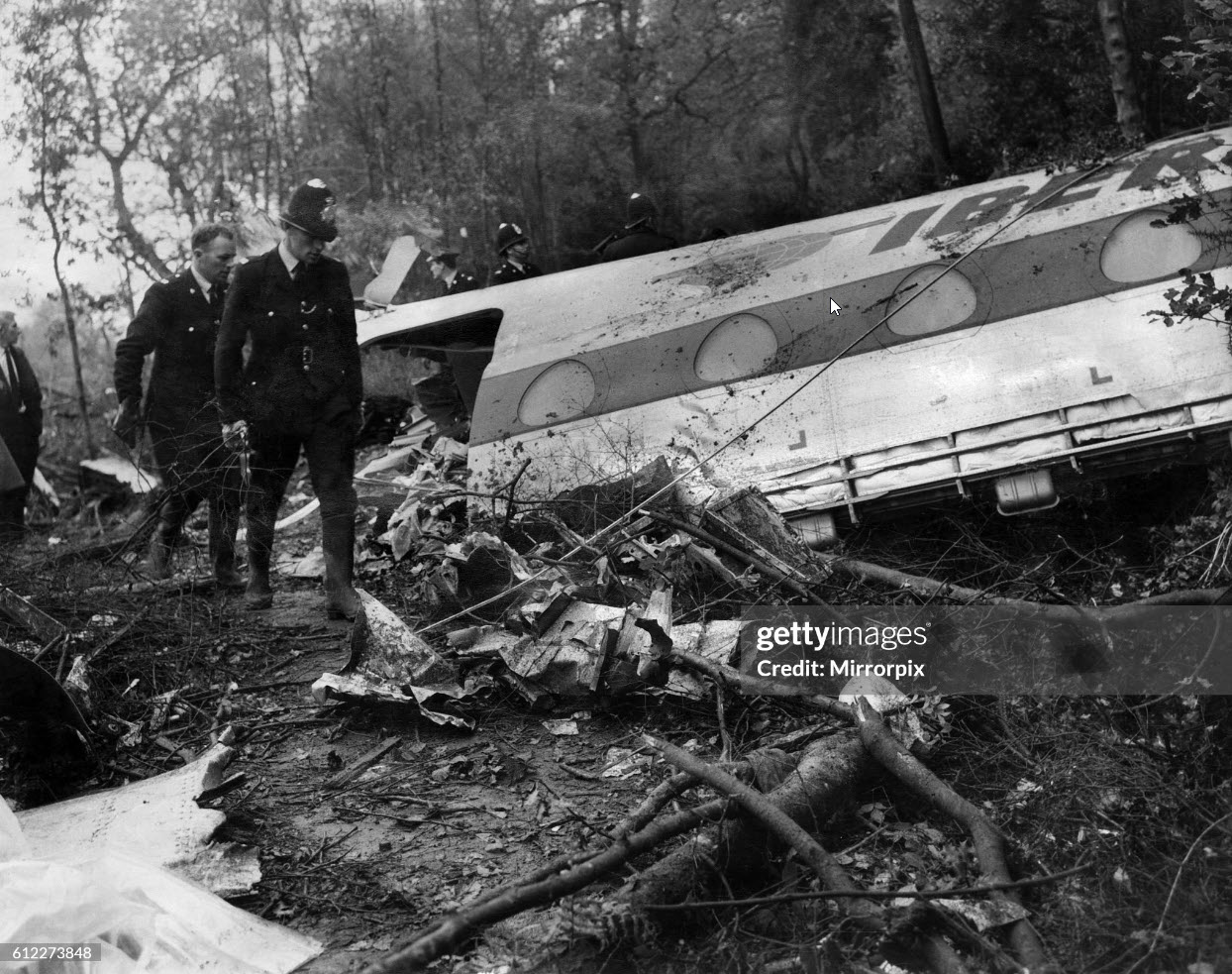
Crash of a Handley Page H.P.67 Hastings at RAF Thorney Island: 1 killed
Date & Time:
Dec 17, 1963
Registration:
TG610
Survivors:
Yes
Schedule:
Thorney Island - Thorney Island
MSN:
88
YOM:
1949
Crew on board:
0
Crew fatalities:
Pax on board:
0
Pax fatalities:
Other fatalities:
Total fatalities:
1
Circumstances:
The crew was completing a local training flight at RAF Thorney Island. After touchdown, the four engine aircraft encountered difficulties to stop within the remaining distance, overran and collided with a building housing the radiotelegraph services of the airbase. None of the crew was injured while one person working in the building was killed.
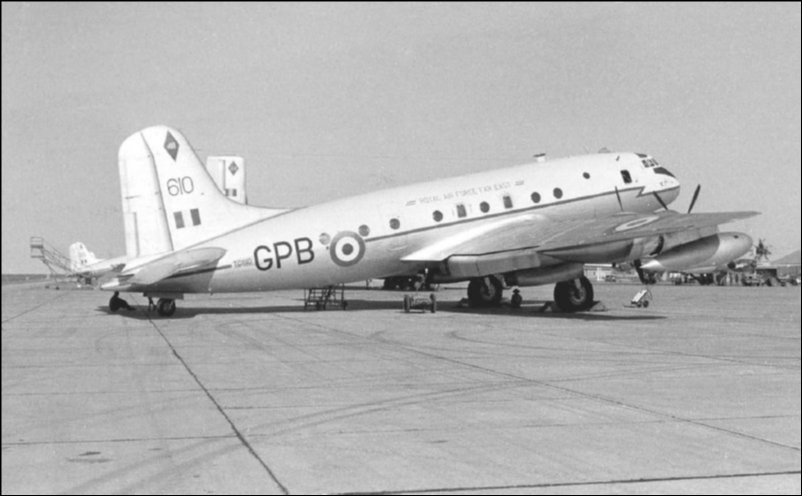
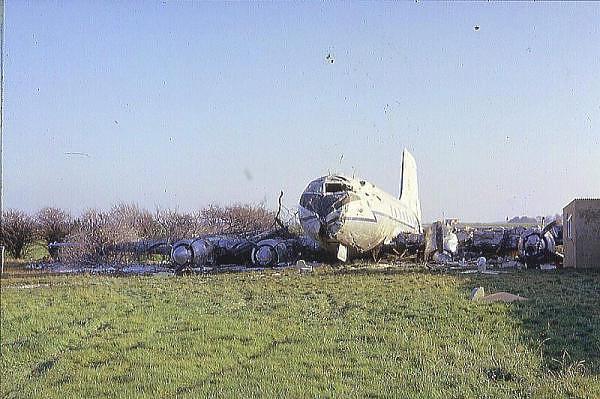
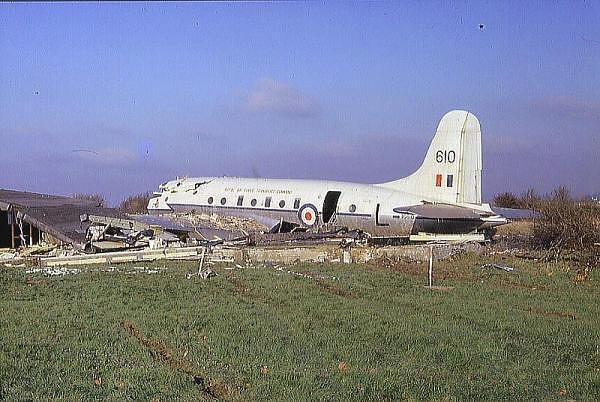
Crash of a Vickers 651 Valetta C.1 in London-Gatwick
Date & Time:
Sep 21, 1963
Registration:
G-APKR
Survivors:
Yes
Schedule:
London - London
MSN:
338
YOM:
1949
Crew on board:
2
Crew fatalities:
Pax on board:
2
Pax fatalities:
Other fatalities:
Total fatalities:
0
Circumstances:
After a flight of some two hours, made for the purpose of testing radio navigation equipment, the aircraft returned to London-Gatwick Airport, U.K.. Before, and during, the flight, undercarriage operation was normal, as was the functioning of the undercarriage light and horn warning system. During the approach, the undercarriage extended normally, and the green lights indicated that it was locked down. Some 50 yards after touch down, the aircraft began to sink on the starboard side and the captain noticed that the starboard green light was no longer showing. There were, however, no reds, and the horn was not sounding. The starboard main undercarriage leg eventually retracted and the aircraft swung off the runway to the right, on to the grass.
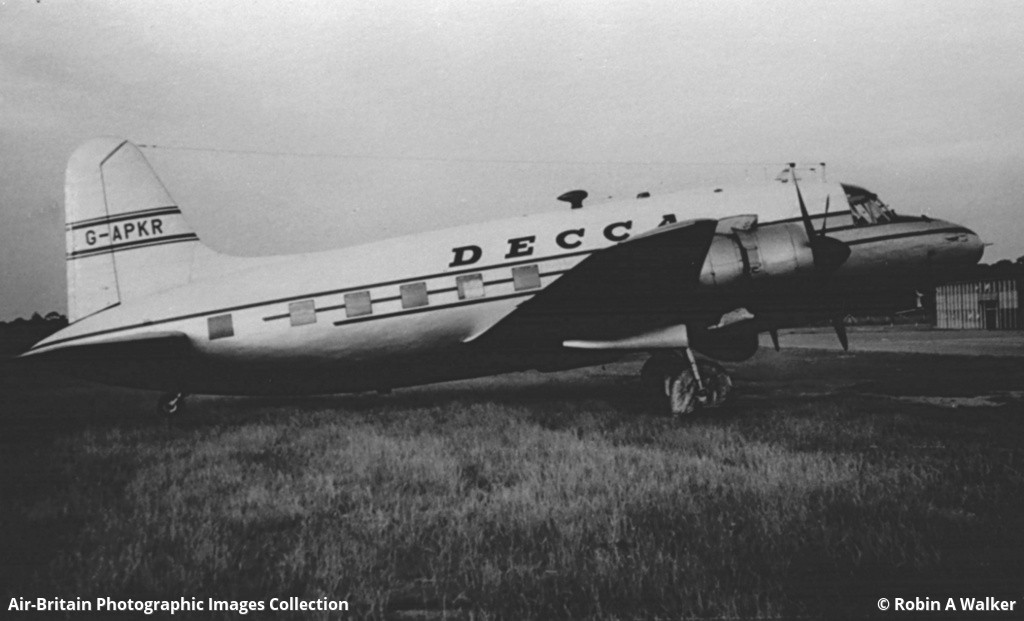
Crash of a Handley Page H.P.67 Hastings C.1 at RAF Thorney Island
Date & Time:
Mar 7, 1962
Registration:
TG508
Survivors:
Yes
MSN:
12
Crew on board:
0
Crew fatalities:
Pax on board:
0
Pax fatalities:
Other fatalities:
Total fatalities:
0
Circumstances:
On approach to RAF Thorney Island, during the last segment, the airplane was caught by downdraft and struck the ground. On impact, the undercarriage were sheared off. The airplane slid for several yards and came to rest in flames. There were no casualties but the aircraft was destroyed.
Probable cause:
Suffered downdraft on final approach.
